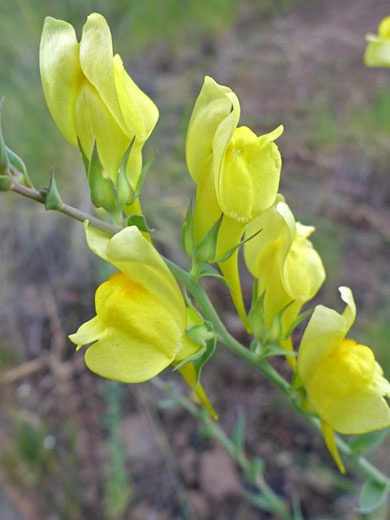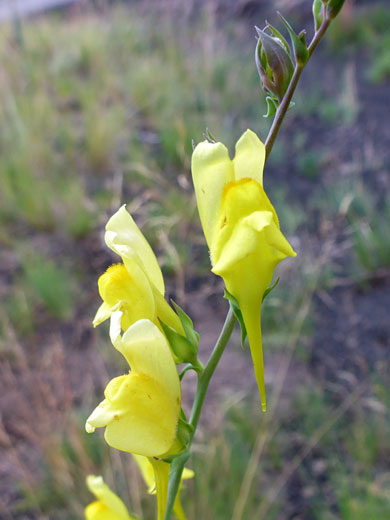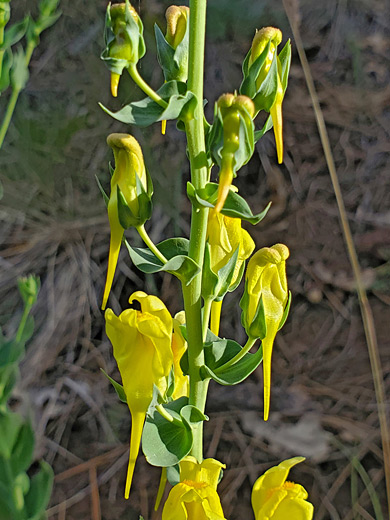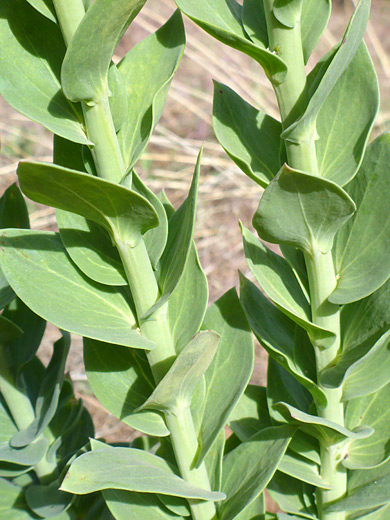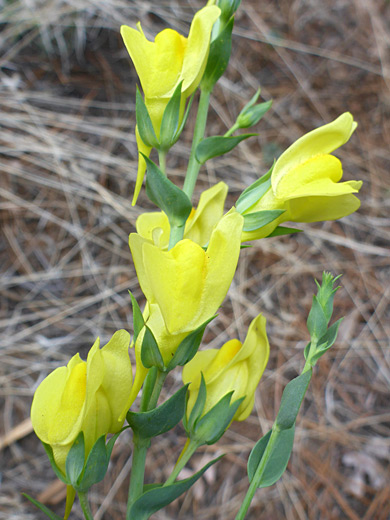Common name:
Dalmatian toadflax
Family:
Scientific name:
Linaria dalmatica
Main flower color:
Range:
All the western states (non native)
Height:
Up to 4 feet
Habitat:
Fields, riverbanks, roadsides, woodland, scrubland, from near sea level to 8,000 feet
Leaves:
Ovate to widely lanceolate, alternate, clasping, glaucous, hairless, up to 2 inches long
Season:
May to September
Like all the 11 US species of this genus, linaria dalmatica is a non-native plant, originating in Europe, and now widespread across the western half of the US, as is the similar, equally common linaria vulgaris. The main difference is the leaf shape; broad and ovate for the former, narrow and linear for the latter.
All plant parts are hairless. Stems are tall, up to 4 feet, and branched, bearing greyish-green, clasping leaves at closely-spaced intervals. Leaf tips taper smoothly to a point. Flowers are borne on stalks of up to half an inch, and they are formed of a green, lobed calyx, half an inch long, and a yellow corolla up to 2 inches long. This has two lips; the upper has two lobes, and forms a hood, while the the slightly longer lower lip has three lobes, and extends backwards to form a narrow spur. The four stamens (in two different-length pairs) are not exserted.
Most US specimens of linaria dalmatica are ssp dalmatica; the much less common ssp macedonica is characterized by ovate calyx lobes less than 0.1 inches long; the former has lanceolate calyx lobes more than 0.1 inches long.
All plant parts are hairless. Stems are tall, up to 4 feet, and branched, bearing greyish-green, clasping leaves at closely-spaced intervals. Leaf tips taper smoothly to a point. Flowers are borne on stalks of up to half an inch, and they are formed of a green, lobed calyx, half an inch long, and a yellow corolla up to 2 inches long. This has two lips; the upper has two lobes, and forms a hood, while the the slightly longer lower lip has three lobes, and extends backwards to form a narrow spur. The four stamens (in two different-length pairs) are not exserted.
Most US specimens of linaria dalmatica are ssp dalmatica; the much less common ssp macedonica is characterized by ovate calyx lobes less than 0.1 inches long; the former has lanceolate calyx lobes more than 0.1 inches long.
All Contents © Copyright The American Southwest | Comments and Questions | Contribute | Site Map




